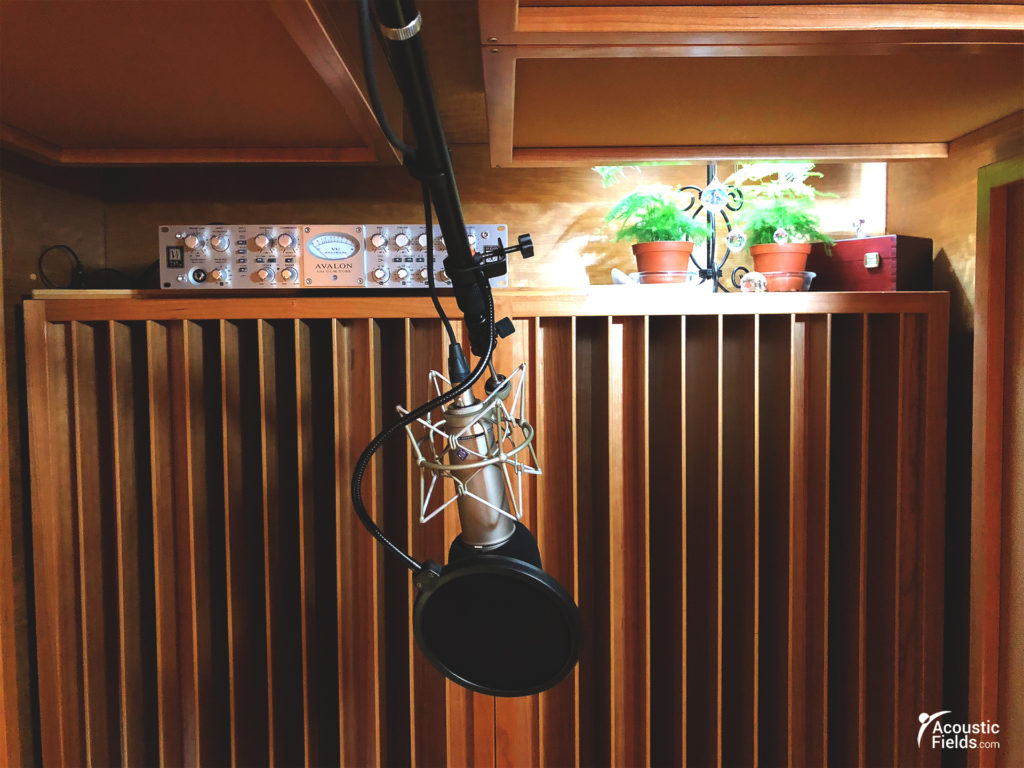
A mic booth is a difficult term to define. Does the term mic booth mean a booth or room to measure the performance of a microphone. Does the term mic booth mean a vocal room to record voice in? The term mic booth is difficult to define since it is not a common term used within the audio world. I am guessing that the term mic booth is used to search for solutions for a vocal booth.
Let’s focus on a room where we will have a mic booth or vocal booth inside the room. There are many options available for this approach. We can use an existing room as a vocal room if we have the proper treatment that we can use inside the room. With the proper treatment types and amounts, we can “build” a room inside an existing room. Another option is to construct a separate vocal room inside an existing room. Take a look at Brenda’s Studio.
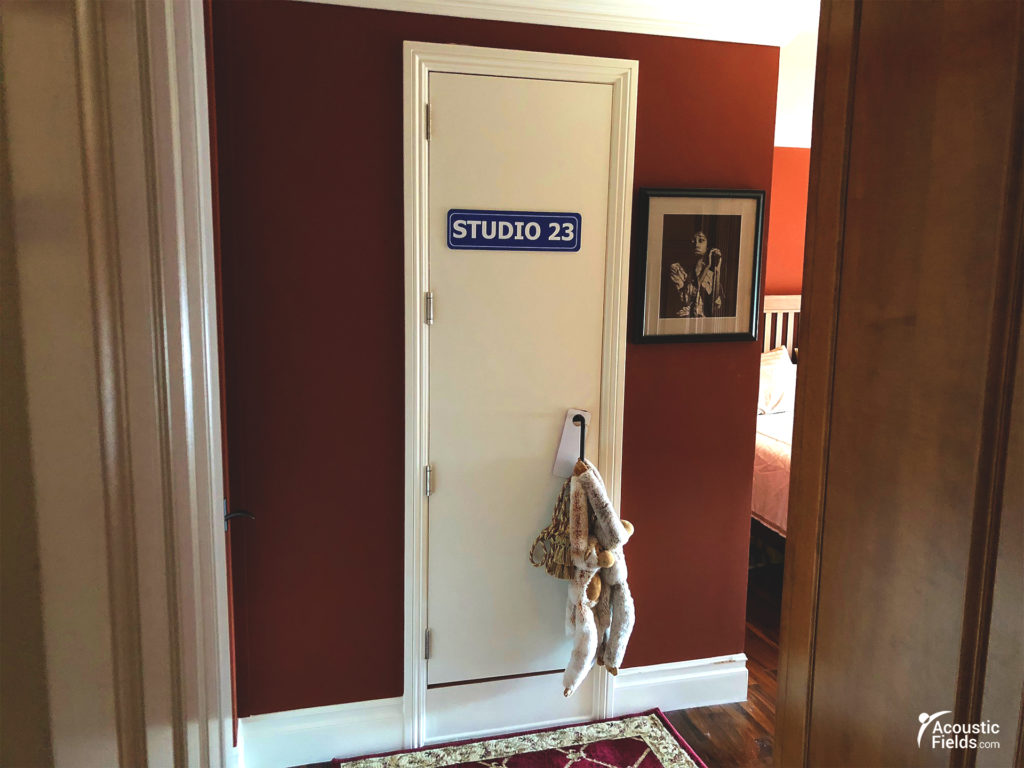
Creating a Vocal Booth: Importance of Low Noise Floor and Proper Room Size
If we build a vocal booth inside an existing room, we are doing this because the noise floor in the existing room is too high for voice recording. Voice recording requires that there is a low noise floor within the room. If the noise that is coming into the room you are considering for a vocal booth is over certain limits you must isolate the vocal room you are going to use from that existing noise level. If you are fortunate to have an existing room with a low noise floor, you can use a series of sound absorbing and diffusing panels.
With voice, it is all about noise. Whether you build a new room that is designed with the proper barrier technology that will mitigate your noise issues, or you use an existing room that is quiet, you must have enough distances between the room walls to support the vocal usage of your room. There is a difference in room size requirements for male and female voice usages.
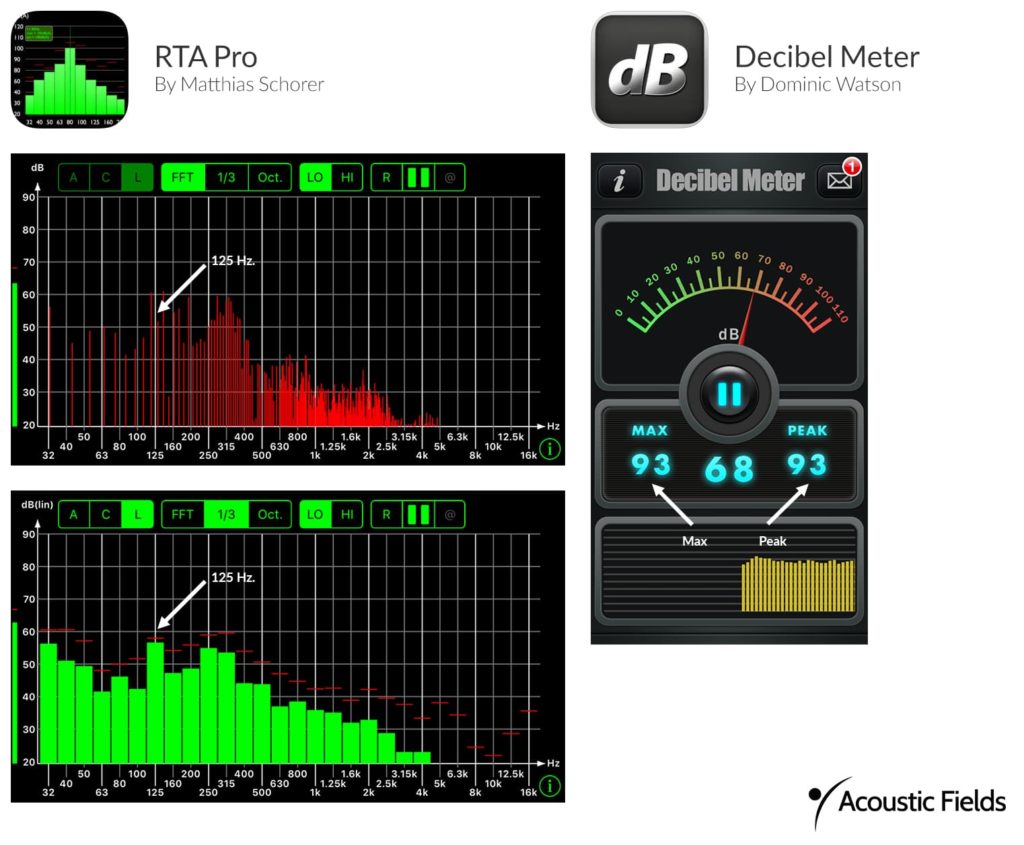
Measure Room Noise Levels with Your Phone for Optimal Soundproofing
At Acoustic Fields, we have noise measurement processes that you can use to take noise measurements with your phone. We send you apps that you download on your phone. You follow our instructions and take noise measurements over a seven day time frame. We need a seven day noise “picture” so we can design the appropriate barrier so you can use the room whenever you desire. You do not want to have a room that you can only use on certain days because the noise levels are too high.
You want and need a room that you can work within whenever the creative urge strikes you. This is why we measure noise over a seven day time period. This will allow us to see the pressure levels of noise along with the frequency of issue on each day of the week.
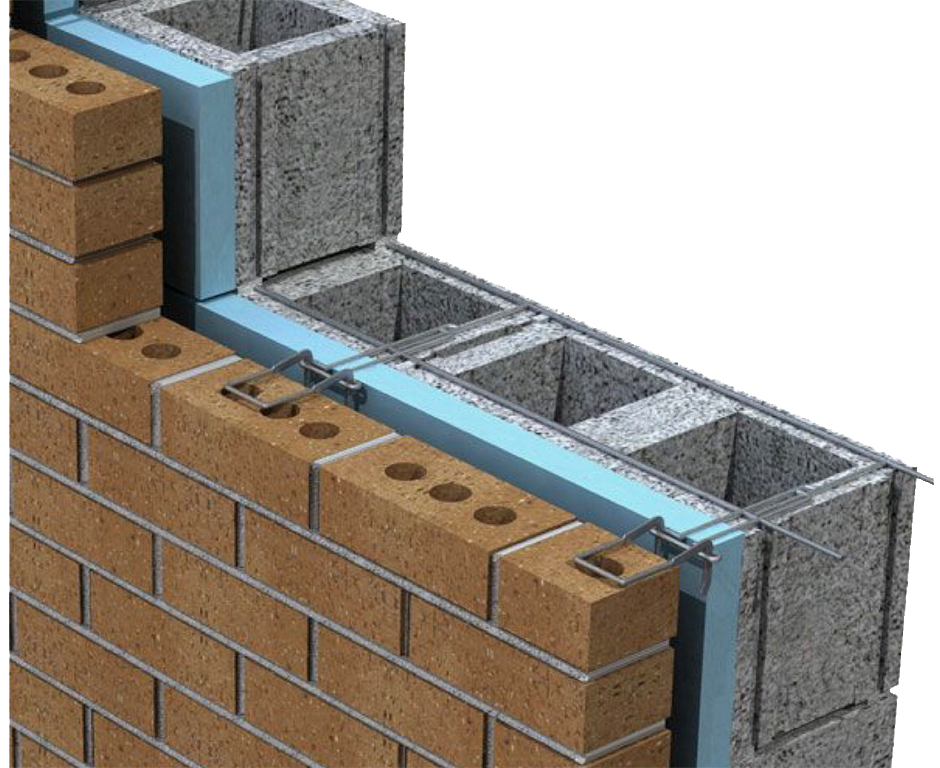
Designing Effective Noise Barriers Based on Frequency Measurements
Once we have the noise measurements twice a day for a seven day time period, we can look at the noise with two frames of reference. We will look at noise below 125 hz. and noise above 125 hz. The reason behind this dichotomy is to see what barrier design we must use. With noise issues below 125 hz., the barrier we will have to build will have more density or mass, take up more wall space, and cost more than a barrier that is designed for noise issues above 125 hz.
Barriers that are built for lower frequency noise such as the garbage truck that rolls through your neighborhood at 6 am. A barrier that is designed for this wave energy uses concrete and brick construction. Noise transmission issues above 125 hz. are vocal noises. Voice noise will require a barrier design that does not need brick or concrete. Most vocal barriers can be accomplished within a 2″ x 6″ or 2″ x 8″ wood frame construction. In any barrier design, the materials we choose are frequency and amplitude dependent.
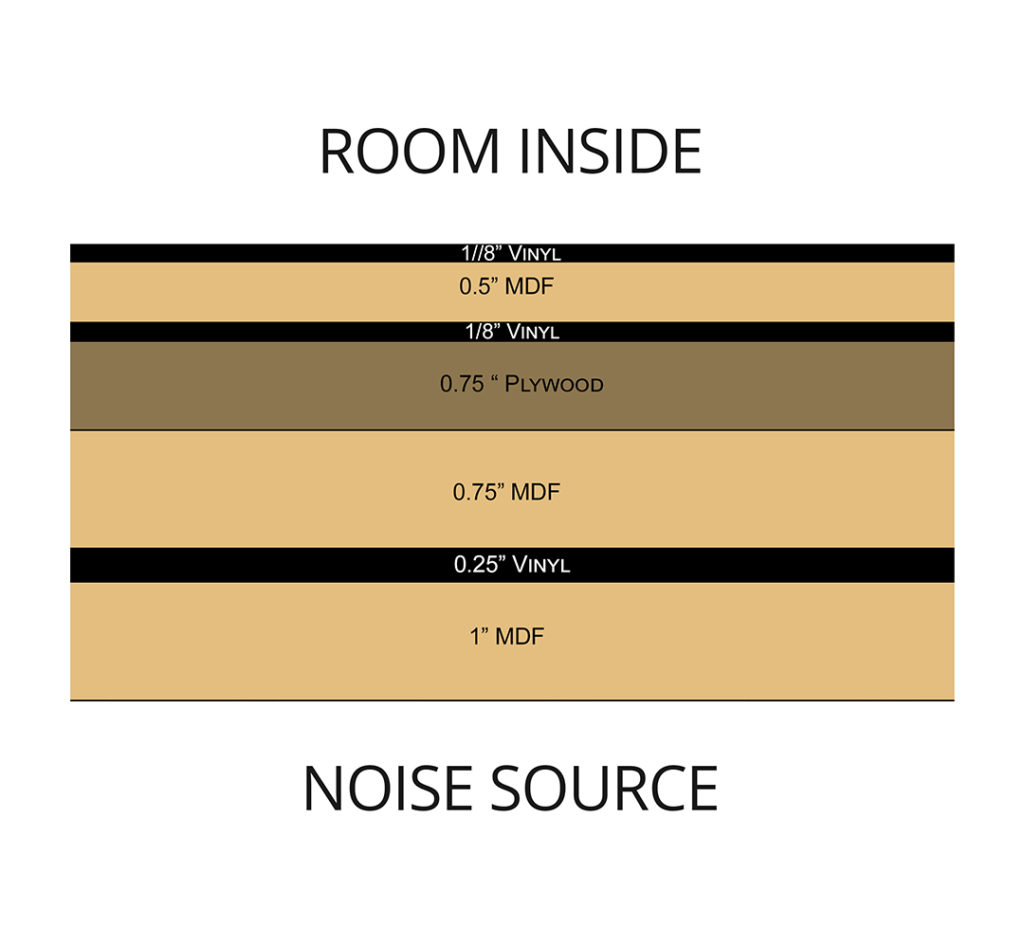
Noise occurs at different frequencies throughout our human hearing range. The frequency tells us where the noise is on the audible spectrum that we use to hear all sounds. The amplitude is the strength of each frequency. We must look at the frequency of the noise, whether it is a lower frequency noise below 125 hz. or is it noise transmission above 125 hz. This will tell us the general class of material types that we will need to use.
Once we have located the frequency range of the noise, we arrange the materials selected within the proper density alignment to reduce the vibrations that transfer through our existing room structure and create our noise transmission issues. Noise starts out as airborne energy and then when it strikes our structures, it turns into vibrational energy and we must apply the science of vibrational acoustics.


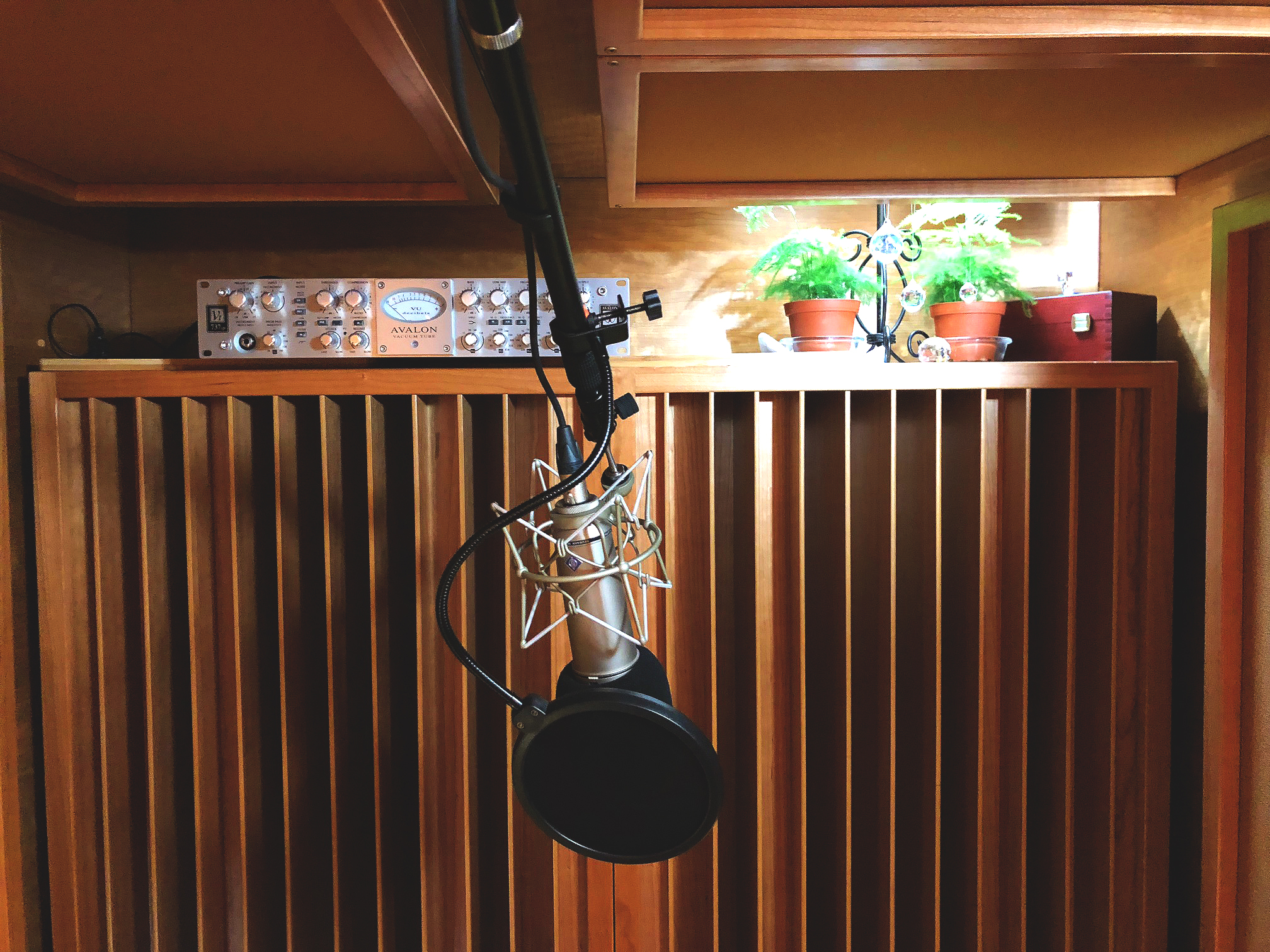





The discussion on ductwork noise transmission from Acoustic Fields highlights crucial aspects of HVAC system acoustics. The movement of air…
Great build plans. thank you Denis
You must use absorption. Never place a chair against a wall.
A friend and I built several diffusors using these plans and they turned out absolutely beautiful. Very good instructions and…